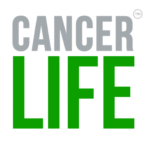Question: What is oxytocin?
Paul: Oxytocin is a mammalian neurochemical that your brain makes and is released during almost any positive social interaction. It motivates us to engage with other people. When your brain makes oxytocin, you have an increased sense of empathy for about ½ hour and reduced stress. During that time, you are more motivated to connect to people around you . The release of oxytocin also activates a much larger network in the brain, called the HOME Network: Human Oxytocin Mediated Empathy system. Oxytocin facilitates the mid-brain to release a chemical called dopamine that is essentially the reward signal. It makes us feel good. Nature has set up a system that rewards us we connect to others, as we relax and feel good.
The HOME Network directly improves the systems of depression, anxiety, and loneliness. It can also directly impact and potentially slow tumor growth by reducing the production of the stress hormone cortisol.
Question: What has your oxytocin research uncovered about face-to-face relationships vs. online community relationships.
Paul: What we discovered when measuring oxytocin levels is that the brain is not picky about the type of connection it gets. An in-person connection is the more impactful. But, when people share emotions, stories and videos in an online community, the brain will also produce oxytocin. In short, humans are so sensitive to social information that the source of the information is less important than the information itself. The key is that it must be genuine, trustworthy information
PART 3: HUMAN CONNECTIONS & CANCER CARE
Question: Can you explain why “strangers in the same situation” can develop powerful, rapid bonds?
Paul: There’s something about strangers who are in the same situation that creates very intimate and rapid bonds that the CancerLife app directly speaks to and that’s brilliant.
Research shows that there are things patients can share with a stranger who’s also going through cancer, that you can’t say or don’t want to say to a family member because it won’t make sense to them. Or, it may appear to a family member that you are not grateful; when in fact, you really are grateful.
Having an app that allows patients, who initially are strangers to each other and are going through similar kinds of situations, to connect to each other is very powerful.
Question: Can interactions among like-minded strangers have an impact on quality of life?
Paul: Empirical evidence indicates that when a community of like-minded people—for example, cancer patients and survivors—become engaged by sharing stories, behaviors and moods, they can feel better over time; their outcomes can be better, their neurologic state can improve, and their brain tends to release more oxytocin. This is what the CancerLife App and CancerLife Communities are all about and that’s brilliant.
Question: Can a single post in an online community ignite a positive ripple effect in a cancer community?
Paul: Yes, any community member who views a conversation can benefit. Technically, there’s a bi-directional flow of information where the person who shares information and the person who receives it— both benefit. When you share something intimate, the receiver’s brain also produces oxytocin; which increases their sense of empathy and emotional connection with you. This motivates a reciprocal emotional connection. Sharing what one is going through can provide a real emotional lift.
That kind of reciprocal connection has downstream effects. First is sense of understanding. If a person understands me, I can see it in his or her face, body language or what they have said to me online. They are not just being nice to me or patting me on the shoulder saying you’ll be okay. But they really understand what I’m going through.
Oxytocin release in the brain motivates a desire to take action to help alleviate another’s suffering. Once I’ve told you the story of my cancer, if you understand this story or relate to that story, you’ve just created a helper for your situation. And again, that can be done very rapidly within 15-30 seconds.
Then both of the people who have been interacting get some additional downstream benefits. One is a reduction is physiologic stress. So, oxytocin says this is a safe environment. You are comfortable around this person or these people; and so, physiologic stress falls and we know that when your stress falls you have an improvement in the immune system.
How can sharing stories and emotions improve feelings of well-being?
Paul We found that stories that have genuine emotion and feature human conflict or suffering are very effective stimulants for oxytocin release. Patients who hear or see a story can truly benefit from experiencing a genuine, heartfelt story. A video that is genuine can be so powerful, so moving, it can be act like a sledge hammer stimulant for oxytocin production.
Sharing stories and moods in CancerLife Communities can have a profound, ripple effect among all members of the community. Those posting their intimate stories feel better and so do those hearing them.
